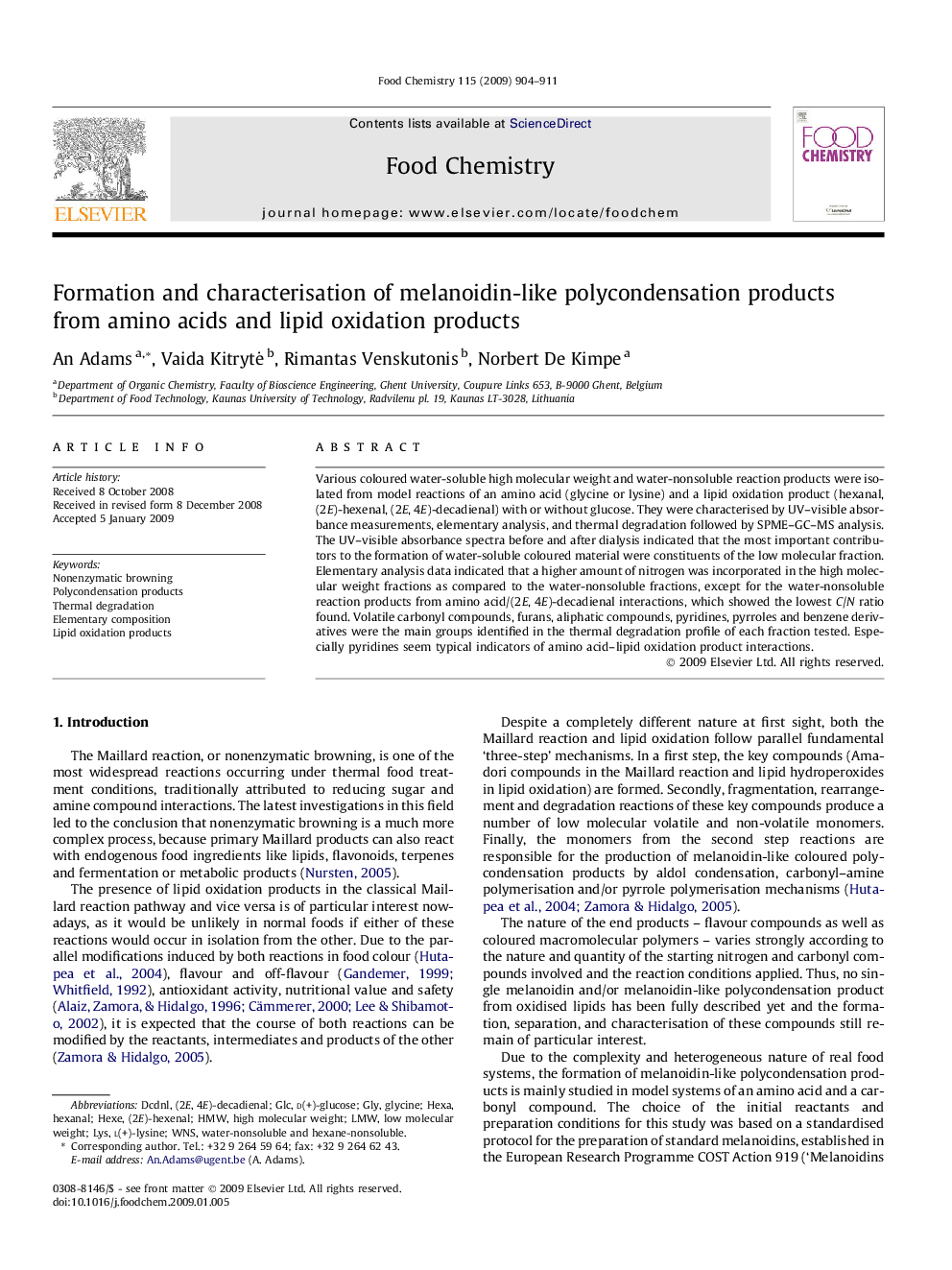| Article ID | Journal | Published Year | Pages | File Type |
|---|---|---|---|---|
| 1188436 | Food Chemistry | 2009 | 8 Pages |
Various coloured water-soluble high molecular weight and water-nonsoluble reaction products were isolated from model reactions of an amino acid (glycine or lysine) and a lipid oxidation product (hexanal, (2E)-hexenal, (2E, 4E)-decadienal) with or without glucose. They were characterised by UV–visible absorbance measurements, elementary analysis, and thermal degradation followed by SPME–GC–MS analysis. The UV–visible absorbance spectra before and after dialysis indicated that the most important contributors to the formation of water-soluble coloured material were constituents of the low molecular fraction. Elementary analysis data indicated that a higher amount of nitrogen was incorporated in the high molecular weight fractions as compared to the water-nonsoluble fractions, except for the water-nonsoluble reaction products from amino acid/(2E, 4E)-decadienal interactions, which showed the lowest C/N ratio found. Volatile carbonyl compounds, furans, aliphatic compounds, pyridines, pyrroles and benzene derivatives were the main groups identified in the thermal degradation profile of each fraction tested. Especially pyridines seem typical indicators of amino acid–lipid oxidation product interactions.
